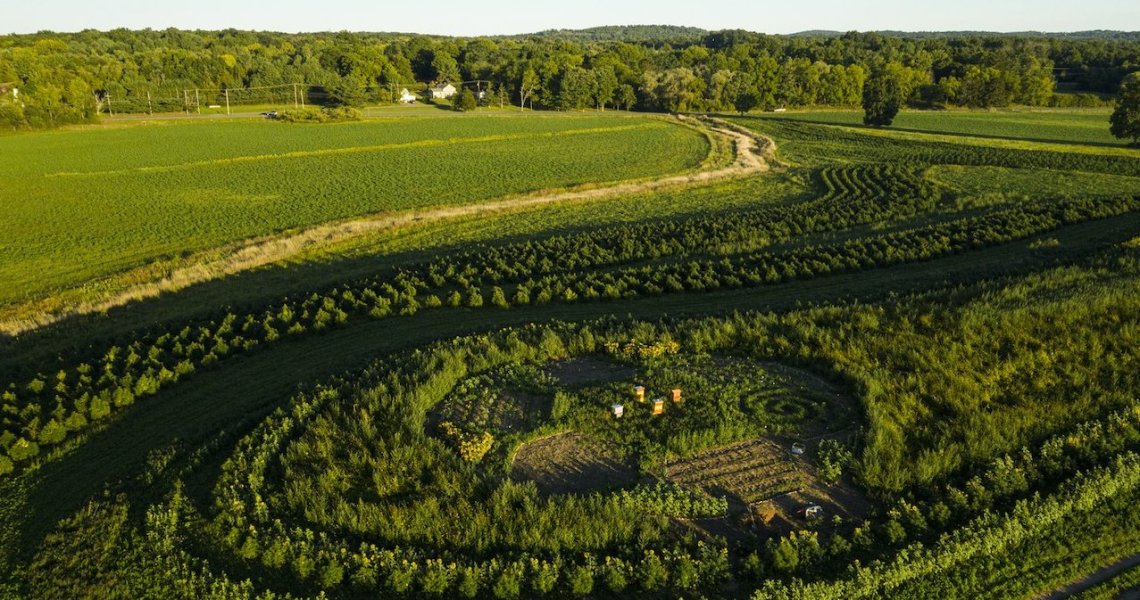Farmacy is getting into virtual gaming.
By the end of June, the farm-to-face beauty brand plans to launch a virtual game called “Farmacy Beauty Lab” on its website. Through the game, users learn about individual ingredients, formulations and Farmacy’s corporate social responsibility partnership with Feeding America. At the end of the game, customers can opt to personalize a bottle of the brand’s Filling Good hyaluronic serum with a short message and add an image from a pre-set icon library for free. Farmacy decided to make this feature consumer-facing (originally it was designed for a virtual press and influencer launch event in April) to make its website more interactive, introduce personalization and increase the amount of time spent on its site.
“As a clean brand, there are higher expectations and an emphasis on sustainability, product sourcing, what we do and why. The game is a fun way to learn about these things, that’s the strategy is behind it,” said Chandler Rollins, Farmacy associate director of PR and influencer relations.
Rollins explained that the initial game will promote Filling Good, but that Farmacy will modify the source code to adapt the game for future product launches. Rollins declined to specify investments made in building the game but said Farmacy was able to work with an engineering team at iLabs, the beauty R&D lab founded by David Chung, Farmacy’s CEO and co-founder.
Game users are first tasked with creating product formulas from a conveyer belt of ingredients, such as an apple or a flask meant to represent hyaluronic acid. By clicking on an object, a pop-up window informs a user about the ingredient, its use cases and sourcing. A second portion of the game integrates Farmacy’s partnership with the non-profit Feeding America, in which users can virtually create meals while learning about the organization. Following this, users have the option to personalize the bottles of Filling Good product.
Gamification is by no means a new phenomenon in the digital beauty world. Brands like Maybelline have tapped Snapchat for its AR activations, while brands like Kiehl’s and Nars have sought to gamify their loyalty programs or online quiz experiences. In a vice versa scenario, gaming apps have also moved to attract beauty brands on their platforms.
Farmacy’s monthly website traffic averages 250,000 sessions, with an average duration of two minutes and 30 seconds, according to Mina Chae, Farmacy vp of marketing and consumer engagement. Farmacy anticipates that more customers will spend a longer amount of time on the website because of the gamification and personalization feature. However, Rollins declined to state whether the brand has seen a correlation between the average time spent on FarmacyBeauty.com and the average order value, or what the average order value is. The brand also declined to share overall revenue or e-commerce and wholesale sales split; it is sold through retailers like Sephora, QVC and Amazon.com, among others. Farmacy
Ad position: web_incontent_pos1
But according to a study by marketing agency Wolfgang Digital in 2017, there is a strong correlation between longer session durations and conversion rates. Wolfgang Digital reported that by increasing time on an e-commerce site by 16%, the conversion rate would increase by 10%.
“When we started we had little to no marketing budget, so how we grew our awareness and sales through personal relationships with our customers and our social community,” said Chae. “For a lot of brands, the [dot com] business is secondary, the focus is on their retail partners’ sites … But we still want to offer unexpected, fun offerings on our site, whether it’s personalization, gamification, or investing in new tools and technologies.”




